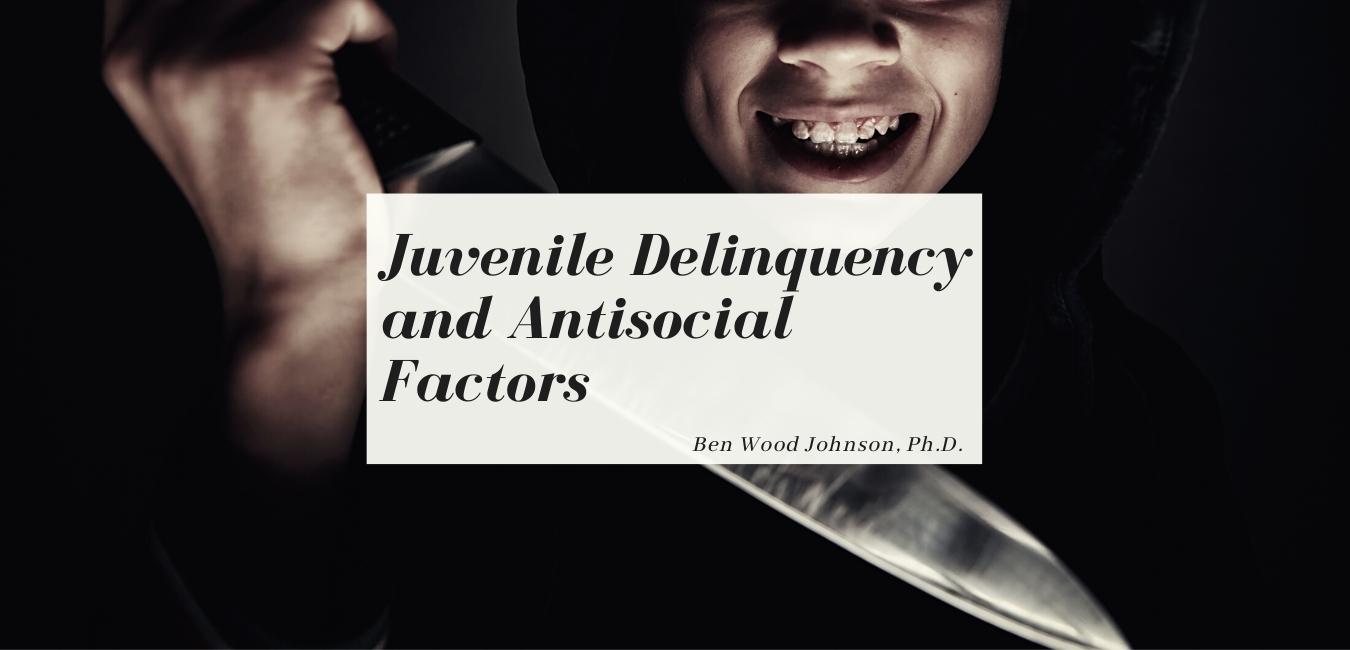Biosocial Criminology
When we speak of biological [or biosocial] criminology, it could be argued that environmental conditions affect the biological characteristics of a person, which may lead to crime.[1] Several studies have examined the link between antisocial conduct and biosocial factors. Nevertheless, biosocial studies [generally] explore antisocial and violent behavior in children and adults.[2] The goal is to determine any correlation between biosocial interactions and crime.[3]
Several studies have examined the link between age-crime and biosocial factors.[4] The common belief is that young children are likely to commit crime compared to other age groups in society.[5] Most people believe in a zero-tolerance approach when it comes to crimes committed by children or young adults.
It would not be far-fetched to argue that the United States’ Juvenile justice system is dysfunctional. It is more punitive than anything else. The system favors incarceration and punishment of youth, while undermining rehabilitation and treatment.[6] But children who are caught within the net of the juvenile justice system often need help. According to the Pacer Center, 60 to 75 percent of those within the juvenile justice system have at least one diagnosable disability.[7]
The victimization of children
Between harassment and mistreatment from prison guards, including other issues, such as sexual victimization and sexual abuse, physical abuse, punishment, and isolation, children are caught in a labyrinth; they face punishment instead of rehabilitation.[8] In California, for instance, incarcerated youth face unbearable situations, including trauma, violence, and discrimination.[9] There is a historical context to the problems of mass incarceration of children, which characterize the American Juvenile system.
When it comes to crime theory, what might explain the push towards the current heavy-handed approach to young offenders? A plausible answer may lie in the theoretical approach in criminology known as Biological [or biosocial] criminology. This theoretical conceptualization of criminal behavior is rooted in the notion that there is a link between biosocial interactions and crime.[10] That is, antisocial behavior, such as the violation of legal or social norms, can be related to molecular genetics, which may include brain structure and function.[11]
[1] Snipes, Bernard, and Gerould, Vold’s Theoretical Criminology; Vold, Bernard, and Snipes, Theoretical Criminology.
[2] Adrian Raine, “Biosocial Studies of Antisocial and Violent Behavior in Children and Adults: A Review,” Journal of Abnormal Child Psychology 30, no. 4 (August 1, 2002): 311–26, https://doi.org/10.1023/A:1015754122318; Adrian Raine, Patricia Brennan, and David P. Farrington, “Biosocial Bases of Violence,” in Biosocial Bases of Violence, ed. Adrian Raine et al., Nato ASI Series (Boston, MA: Springer US, 1997), 1–20, https://doi.org/10.1007/978-1-4757-4648-8_1.
[3] Anna Rudo-Hutt et al., “Biosocial Interactions and Correlates of Crime,” University of Pennsylvania ScholarlyCommons, Center for Neoroscience & society, 2011, 30.
[4] Anthony Walsh and Kevin M. Beaver, Biosocial Criminology: New Directions in Theory and Research (Routledge, 2008).
[5] Loeber and Farrington, “Young Children Who Commit Crime.”
[6] Bishop Masters, Donna Gallegos, and Bob Schwartz, “Juvenile Justice Issues,” Youth Advocate Program International (blog), January 27, 2014, http://yapi.org/childrens-rights/juvenile-justice-issues/; Laura Temme, “Problems Within the Juvenile Justice System | Lawinfo.Com,” LawInfo, January 13, 2021, https://www.lawinfo.com/resources/criminal-defense/juvenile-law/issues-and-problems-within-the-juvenile-justice-system.html.
[7] Pacer Center, “Juvenile Justice – Issues Overview,” Pacer Center: Champions for children with disabilities, 2021, https://www.pacer.org/jj/issues.
[8] Temme, “Problems Within the Juvenile Justice System | Lawinfo.Com.”
[9] Kiara Alfonseca, “California’s Juvenile Justice System Had 16 Years To Fix Its Problems. It Didn’t.,” HuffPost, February 19, 2019, https://www.huffpost.com/entry/california-juvenile-justice-abuse-harassment_n_5c51cf59e4b00906b26fcc11.
[10] Rudo-Hutt et al., “Biosocial Interactions and Correlates of Crime.”
[11] Rudo-Hutt et al.




